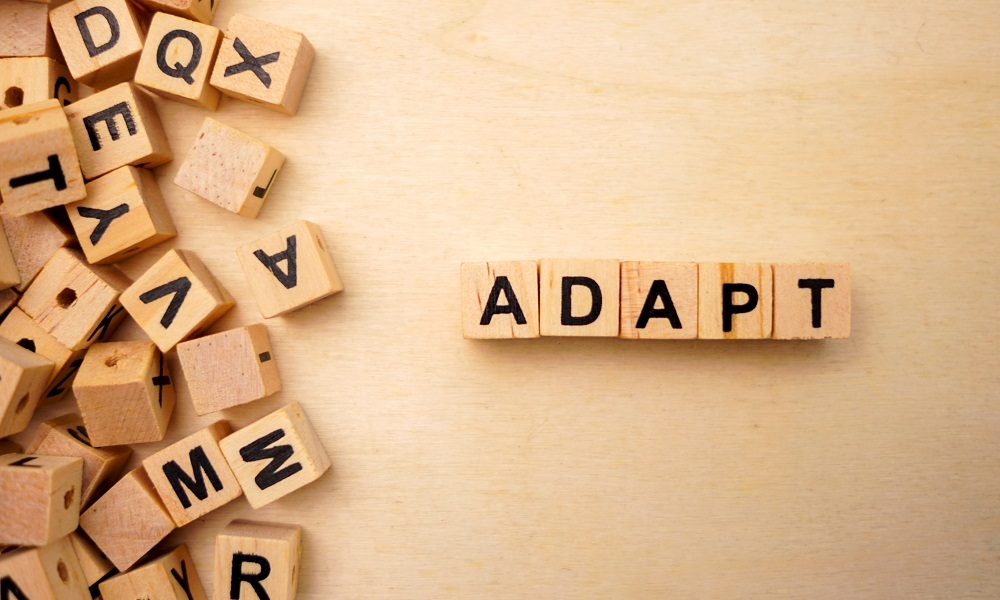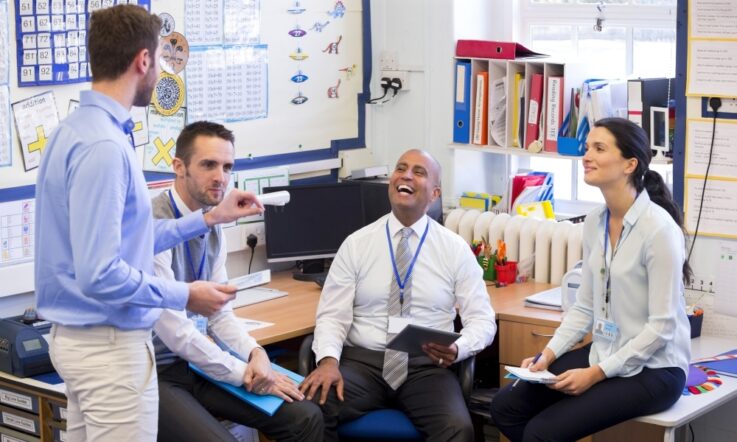A common goal for all schools is to continually improve practice and lift student outcomes. Precisely how leaders respond to this complex challenge is impacted by many internal and external contextual factors, including student needs and the expertise of the principal, teachers and support staff.
Trinity College is a multi-site campus north of Adelaide, with 314 teachers and 4,273 students spread across 4 early years to year 10 schools, and a year 11 and 12 senior school. It has a long-standing and successful partnership with academics at the University of South Australia dating back to 2017, with an ongoing focus on embedding research- and evidence-informed practice.
Thinking differently about education
‘We'd been a quite traditional organisation where...ATARs and NAPLAN results were probably high priority, along with sporting success in competitions, and we could see that that was inadequate for the needs of our students to be successful beyond school,’ Wayne Jaeschke, Director of Research and Learning Services at Trinity College, tells Teacher.
‘We started looking at the need to develop the whole child, thinking about those capabilities around the General Capabilities, OECD 2030 ideas; we recognised that we need to start thinking differently about how we approach education. So, realising that we didn't have all of the expertise that we need to help with that transition, that's where we reached out to UniSA to say, “how might we work together on this?”
Recognising local context
Recently, the college and university has been developing a leadership approach to recognise the complexity of school systems, and adapt strategies and decisions to suit the local context. Jaeschke has been working closely with Simon Leonard – an Associate Professor of STEM Education and the Professorial Lead for Industry Engagement and Career Development at UniSA.
‘The interesting thing is that with our schools, we do have quite unique cultures across each one,’ Jaeschke explains. ‘We have some with quite long-standing leadership teams – so, we'll have some that will have a real affinity with a Marzano approach, or a Visible Learning approach, or a Visible Wellbeing approach. So, when Simon and I work with those schools, we need to recognise local context, not just of the college, but even within the college and the schools and sub-schools where they’re already holding quite tightly particular values or approaches.’
The complexity of school leadership
‘I think leadership has always been complex,’ Leonard tells Teacher. ‘When we [ask] the general public, or teachers “what does leadership look like?” we have 2 visions of leadership in our mind. We have leadership where everyone in the organisation has high agreement about what's the priority and everyone in the organisation has a pretty common response to how we deal with that. And schools run on that stuff…we have to have the timetable organised, and that sort of stuff, and it's important that that work gets done. And we also can really easily envisage the leader who can deal with complete chaos – there’s a really big issue going on and you just have that leader who manages to work with the organisation, and we know what that looks like.
‘But most of what happens in schools is somewhere in between those 2 things. Most of what happens in schools is: we actually don't have high agreement about what's the priority, because schools are trying to deal with multiple objectives all of the time; and then we don't have high agreement about how we should respond to any of those agreements either. There's a multitude of advice that comes out of the research, that comes out of traditional practice, and the different teachers bring with them, and they bring different expertise.
‘And so, when we're talking about that, it's really leadership in complexity. We're generally talking about “how do you lead in an organisation where there are always multiple goals and multiple objectives, and there are always multiple solutions and there's different skillsets and you got to bring them all together?”.
The new approach in practice
Leonard has been working with Jaeschke and the team to build the capacity of emerging leaders, recognising that leadership is diverse, dynamic and spread throughout the organisation. A focus of this collaborative approach has been how to transition the college to a more expansive model of education that builds the capabilities of the whole child, alongside subject knowledge, to prepare them for success beyond school.
‘One of the things we do at the broader scale is support collaborative inquiry around the development of complex capabilities,’ Jaeschke says. ‘This is something that the College-wide staff support each of the schools in engaging with.’
There is a common framework for a collaborative inquiry cycle into developing complex capabilities, with common supports, scaffolding and strategic intent. ‘But in terms of being able to take that pragmatic and adaptive [leadership] approach to the local level – what that means in real terms is that one school that's really invested in a Visible Wellbeing approach might then identify, “OK, we're interested in capabilities around wellbeing specifically, we have this particular approach to leadership,” so we work with that as staff start engaging in that collaborative inquiry cycle and say “how might we develop this aspect of wellbeing in this context?”
‘At another school, they might have a focus on creativity. So, for that group, they might have been working with [another academic] in another project previously, looking at development of creativity. So, they've already got a framework for what creativity looks like. So, then we're coming in with support around a collaborative inquiry cycle around how we develop those students’ creativity in their context. So, it will look different for each of the schools, but there's a common approach, common supports and it is heading in a common direction, but there is enough responsiveness for those local leaders to make it their own.’
From a research perspective, Leonard says the collaborative inquiry approach is drawn out of rich program evaluations that don’t just focus on one narrow aspect. ‘When we started to talk about the complexity of school, we know that we're interested in cognitive measures, absolutely, but student motivation and student wellbeing and sense of connectedness and relationship with peers and with teachers and all of those things come into play. So, when we're changing the way that we operate as a school, we're needing to actually account for all those different dimensions of life within a school.
‘And so that's what been really trying to build over the last few years – both the teacher capacity to work with different kinds of data that informs the evaluation of what's happening in their practice and within the practice of their school, and also building the capacity of the school to actually provide that data…It becomes a cycle of improvement that probably never ends because we're always going “Yeah, OK, we're noticing different things as we work through the challenge.’
Jaeschke adds some of the college’s 5 schools are more culturally diverse, some are more rural, but aggregated ICSEA (Index of Community Socio-Educational Advantage), wellbeing and other data mirror the broader South Australia and national numbers. ‘So, we're this interesting cross-section of society, and we've got that scale, which means that we can then start learning from each other and making some interesting comparisons.’
As a leader, what are the internal and external contextual factors that impact improvement approaches at your own school? How does this affect your leadership approach?



